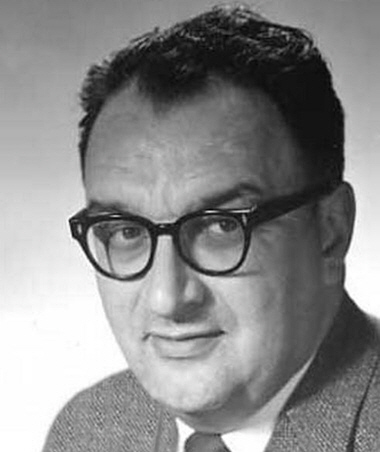
Laurie Irvine - Engineer CKFC & short wave CKFX Vancouver 1934-37; CFJC Kamloops 1937-41; as Laurie Irving CKWX Vancouver 1941-1958, production manager 1942, special events director mid-fifties; CFCF Montreal 1958-61; CKWX 1961-63; BCIT Communications Dept. 1963-74; CJVI Victoria commentator 1974-75. Died January 23, 2002
***

Lundy Sanderson - CFJC Kamloops; host Nite Shift CJVI Victoria 1953; CKWX Vancouver 1960s; one of founding faculty members 1964 and department head Broadcast Communications BCIT 1974-85; led founding of Broadcast Educators Association of Canada late 1970s; retired in Qualicum Beach BC
History
of Broadcast & Media Communications department
at
BCIT
There were only seven
departments on campus when BCIT opened its doors in 1964.
The concept for a
training program designed to meet the needs of British Columbia’s broadcast
industry was on the drawing board for a few years when the government of the
time approached the broadcasting industry to solicit its involvement. The
response was a hearty "Yes!" The charge was led by John Ansell from
CKWX, Hal Davis from CKNW, and Hugh Palmer from the CBC. These industry-leaders
established a committee to decide what this new animal should look like. Well-known
BC broadcaster Laurie Irvine was hired to lead the faculty team that would develop
our programs - the first Department
Head until 1974.
The twenty five
or so students who commenced studies in September of 1964 were located in the
brand new radio and television training facilities on the fourth floor of what
was then BCIT’s main building. A state-of-the-art McCurdy audio console formed
the core of radio training and the television training area boasted Western
Canada’s first colour television camera: a Philips Norelco unit that was loaned
to the CBC from time to time so they could do colour broadcasts. Students were
enthusiastic and tackled this new professional training with great dedication.
Proper business
dress was the rule of the day at BCIT, so male students wore suits and ties,
female students wore dresses or skirts. When it came time for a lab exercise,
out came the white lab coats!
Early on, faculty
members introduced the concept of a month of practicum training at the end of
the school year. First-year students worked on practical projects in the
Broadcast labs, while second-year students worked in industry positions. This
practical exposure has led many students to full-time jobs ever since.
While rapidly establishing
a reputation for turning out first-rate broadcasters, faculty began to
recognize that different students had completely different interests and career
goals within the industry. Initially three areas were established for students
in their final term: radio, television, and news. By 1974, these areas had
evolved into separate two-year programs in Radio, Television, and Broadcast
Journalism. Intakes of up to 60 students annually were positioned to meet the
industry’s growing demand.
Lundy Sanderson
succeeded Laurie Irvine when he retired in 1974 and led the program through
many changes, including an expanding intake of more than 100 students in 1977.
Shortly after, the Radio and Broadcast Journalism programs were moved to newly
renovated facilities in the north wing of the BCIT Library. Campus radio
station CFML began broadcasting on local cable at 104.5 in January 1982. New
construction in the early 80’s added full television training facilities to the
Library wing. In January 1983, the 30,000 square feet Broadcast Centre you see
today came into being.
As the founder of
the Broadcast Educators Association of Canada (BEAC), an association
representing over 20 programs across Canada that offer similar post-secondary
training in broadcasting and media, Lundy has been joined over the years by
several other faculty members serving in various capacities on the BEAC board.
See Bio on Brian Antonson